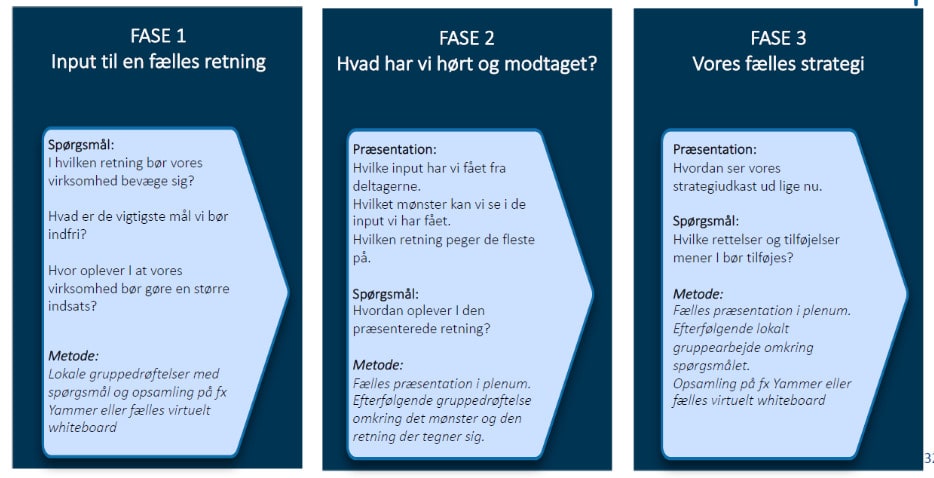It's one thing to hold a virtual meeting, but it's far more challenging to create effective virtual meetings that are both engaging and value-adding.
Most businesses and organizations have become accustomed to communicating via digital platforms like Zoom or Microsoft Teams, and most have experience holding meetings online. But what's next? Is it possible to have the difficult conversations and facilitate long-term processes virtually?
Preparation as a prerequisite
As with short virtual meetings, it is crucial that you as a facilitator are able to create engagement and presence at a distance. A prerequisite for this is that the meeting is well prepared. You can, for example, prepare a script using the "IDOARRT" method, where you fill in the information:
- The intention: What is the intention of the process? Is it an orientation, dialog or a decision?
- Desired outcome: What do we want to achieve with the process? What should be able to be done, decided when we are done? For example, a clarification or a mandate.
- Agenda: What is today's program?
- Rules and roles: What are our ground rules? How should we work with each other? E.g. phones, emails, camera, role of facilitator vs. role of participants
- Time: What are our time frames?
Break down the barriers
With good preparation, virtual facilitators can be personal, present and authentic, and have both in-depth and difficult conversations. But how do you design a process that is suitable for longer sessions with varying numbers of participants in the virtual space?
Firstly, you need to use the right technology - and use it right. Whether you use Microsoft Teams, Skype for Business or Zoom for your meeting depends on the purpose. Familiarize yourself with what the different platforms can do and compare it to what you want to get out of it. For example, do you want to be able to send participants to small break-out rooms? Or should it be a presentation where you speak and the participants listen? It's a good idea to choose one technology in your organization and build up experience and familiarity with it.
Tips for facilitating and organizing
Next, you need to design the process - how do you best create coherence in virtual communication? Here you can draw on experiences from physical meetings. However, it's even more important to design a successful process virtually, where small talk and established norms for meetings are not possible in the same way. That's why creating presence through involvement is key. How do you do this?
- High frequency of communication: for example, hold morning meetings that can effectively build and support morale and engagement. Establish a regular rhythm - e.g. half an hour on Monday, Wednesday and Friday.
- Think inclusion, relationship and mastery: Pay attention to the micro level - in concrete terms, this means that the form of the meeting must support a dialog that also accommodates shy and introverted participants. Dialogue spaces need to be facilitated, they don't happen by themselves - not even small talk.
- Rotate meeting tasks: If necessary, assign meeting management or topics/presentations/exercises to two employees in writing.
- Meetings should be interactive: Pay attention to creating dialog and getting feedback. Make sure that individual employees can have a dialog - possibly in smaller groups.
- Be proactive: Ask about the individual - it's your responsibility as a facilitator to communicate to everyone.
Evaluate your meetings: Use virtual meetings as a learning trajectory to better structure your meetings, rethink your roles and get feedback for future adjustments.
JOIN OUR COURSE
Build wellbeing and trust despite the distance
The "Managing Virtual and Hybrid Work Communities" course gives you the essential tools to increase productivity and well-being through remote management.
This is a course for those who work in management and want to know how to achieve strategic goals as an individual or organization through virtual collaboration.
Example: Designing a strategy process
"Virtual meetings are second-class meetings" is a common prejudice. But they don't have to be - with thorough preparation, successful process design and effective facilitation, it's actually possible to be brainstorming, creative and have the hard, deep conversations.
For example, a large national corporation has succeeded in conducting a strategy process virtually with this process:





